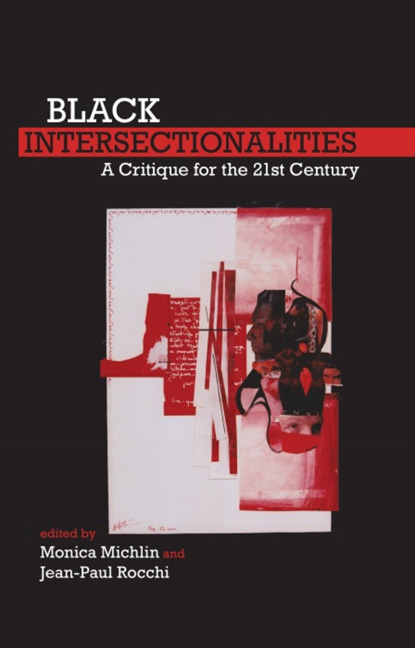Book contents
- Frontmatter
- Contents
- 1 Introduction: Theorizing for Change: Intersections, Transdisciplinarity, and Black Lived Experience
- 2 Exordium: Writing and the Relation: From Textual Coloniality to South African Black Consciousness
- I Challenging Hegemonic Gender Identities
- II Nonconformity and Narrative heorizing
- 6 Benjamin Franklin's Ethnic Drag – Notes on Abolition, Satire, and Affect
- 7 “Weh eye nuh see heart nuh leap”: Claude McKay's Literary Drag Performance in Banana Bottom
- 8 The Souls of Black Gay Folk: The Black Arts Movement and Melvin Dixon's Revision of Du Boisian Double Consciousness in Vanishing Rooms
- III Upsurges of Desire
- IV Epistemological Genealogies and Prospections
- Contributors
- Index
6 - Benjamin Franklin's Ethnic Drag – Notes on Abolition, Satire, and Affect
from II - Nonconformity and Narrative heorizing
- Frontmatter
- Contents
- 1 Introduction: Theorizing for Change: Intersections, Transdisciplinarity, and Black Lived Experience
- 2 Exordium: Writing and the Relation: From Textual Coloniality to South African Black Consciousness
- I Challenging Hegemonic Gender Identities
- II Nonconformity and Narrative heorizing
- 6 Benjamin Franklin's Ethnic Drag – Notes on Abolition, Satire, and Affect
- 7 “Weh eye nuh see heart nuh leap”: Claude McKay's Literary Drag Performance in Banana Bottom
- 8 The Souls of Black Gay Folk: The Black Arts Movement and Melvin Dixon's Revision of Du Boisian Double Consciousness in Vanishing Rooms
- III Upsurges of Desire
- IV Epistemological Genealogies and Prospections
- Contributors
- Index
Summary
In the English-speaking transatlantic sphere, all legal involvement in the slave trade was officially abandoned between 1807 (Great Britain) and 1808 (the United States); slavery would eventually be abolished in the British Caribbean in 1833–34 and in the United States in 1865. The struggle to ban the trade in people of African origin and, by extension, their “thingification” (Césaire, 1950) was fought by many – by enslaved blacks and by white abolitionists – and it was fought in many different forms. Forms of resistance on the part of the enslaved ranged from survival tactics of fugitive slaves organizing in so-called maroon societies to the emerging textual interventions of the slave narratives – which we may more accurately call “freedom narratives,” as Paul Lovejoy has recently suggested (2011). At the same time, whites wrote pamphlets, anti-slavery treatises, public addresses, etc., and organized in abolitionist societies.
A number of scholars working on abolition have stressed the resolve of black and white people to cross-identify and join in the struggle for abolition. As Linda Alcoff emphasizes, “throughout US history, some white people have joined in common cause with people of color to fight slavery, racism, and imperialism, from the New York Conspiracy of 1741 to the John Brown uprising” (2006: 205) and beyond. What challenges this rather optimistic notion of cross-racial collaborations and efforts toward ending the trade and the enslavement of African-origin people are the fundamentally different ascriptions of social positions that black and white people inhabited at the time. This is one of the repercussions of the slave trade and slavery: the impact it had on an understanding of something like sociality – perhaps even in our time – of who can partake in sociality and who is denied access to it. Modern transatlantic enslavement practices are about the capitalization of racialized human beings made into property and commodity, into things in which others trade and from which they make profits, gains, and losses. Orlando Patterson speaks about Slavery as Social Death (1982). Hortense Spillers has famously called the captive body “flesh,” which she defines as “the zero degree of social conceptualization” (2003: 206) and which entails a complete erasure of the intelligibility of enslaved people as gendered subjects.
- Type
- Chapter
- Information
- Black IntersectionalitiesA Critique for the 21st Century, pp. 84 - 97Publisher: Liverpool University PressPrint publication year: 2013



